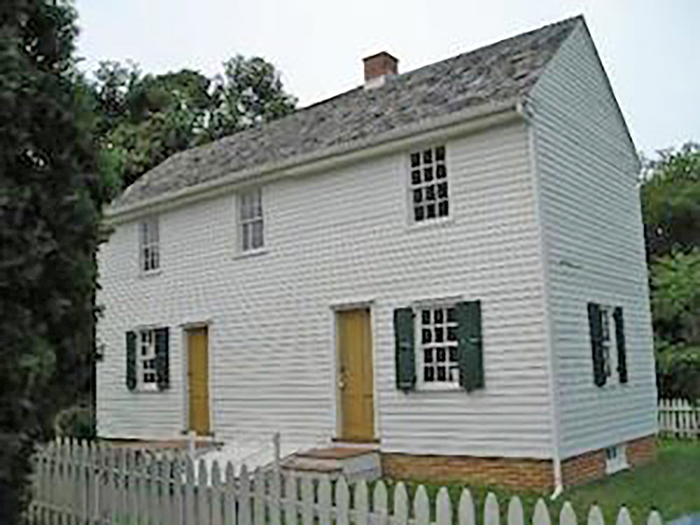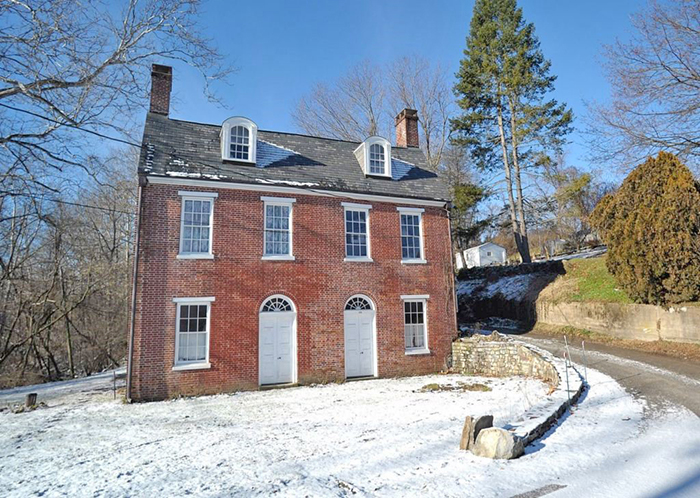By Pam Teel
The Underground Railroad was a network of secret routes and safe houses that were established in the United States during the early to mid-19th century. Its purpose was to help enslaved African Americans escape from the southern states, where they were held in bondage, to get to the northern states and also to Canada. Most people are familiar with the Underground Railroad knowing that it was not an actual railway but a route linking slave states in the South to free states in the North by utilizing abolitionists’ homes, churches, and other properties as places to hide and seek food and shelter along the path to freedom. Among white abolitionists were many free African Americans who helped create isolated communities, mostly in rural areas, to hide those escaping; thus risking their lives and safety to aid those seeking freedom. While Canada was a common destination, other routes led to Mexico and to the islands in the Caribbean, which were not part of the slave trade. The Underground Railroad began in the late 18th century and ended when Abraham Lincoln signed the Emancipation Proclamation.
Runaway slaves often entered New Jersey by crossing the Delaware River or the Delaware Bay at night using small boats operated by local conductors (those who guided the escapees.) These boats used a signal of signal lights, yellow on top and blue on the bottom, to indicate safety for landing. Some escapees arrived in canal boats transporting coal from Pennsylvania. These boats had hidden compartments under the cabin covered with coal. New Jersey was an integral part of the eastern corridor of the Underground Railroad as southern slaves traveled through the state to head further north. Several Underground Railroad routes existed in the State.
New Jersey was also an active section of the Underground Railroad because of its location between two urban centers, Philadelphia and New York City, and because of its close proximity to the slave states of Delaware and Maryland. Although slavery was not extensive in the North, it did exist. Northern states began abolishing slavery in 1774. New Jersey was the last northern state to pass a law that enacted a gradual emancipation of enslaved people in 1804, which allowed children born after the law’s passage to be free at 21 for females and 25 for males. It wasn’t until New Jersey’s 1846 “Act to Abolish Slavery” was passed that slavery became illegal and current enslaved people within the state, instead, could become “apprentices for life.” So, during the 19th century, there were both free and enslaved black residents living in New Jersey.
Four main starting points in New Jersey for the Underground Railroad were, Cape May, Greenwich/Springtown, Salem, and Fort Republic. From there, escape routes led north to Camden, Mount Holly, and Central New Jersey, then eventually connecting to Northern New Jersey’s path to freedom. By the 1850’s approximately 100,000 slaves had escaped via the Underground Railroad.

New Jersey had certainly played a significant role in helping escapees find freedom. Here are some notable places associated with the Underground Railway in New Jersey.
Peter Mott House- Located in Lawnside, NJ: The Mott House is a museum and a renovated station along the Underground Railroad. It was part of a network that facilitated the escape of fugitives in the 19th century. Located in Lawnside, this historic home is the oldest standing residence. Peter Mott was a freed black farmer, carpenter, pastor, and a stationmaster on the Underground Railroad. In 1844, he purchased his first lot in the newly found community of Free Haven (now Lawnside.) This was land set aside by Quaker abolitionists for an African American community. The 1870 census listed him at age 60 along with his wife Eliza. He was listed as owning real estate worth 1000 dollars and he was among one of the richest people in the area. Mott was born in Delaware and was probably a slave at one point before escaping. He died in 1880. According to local evidence, nothing in writing, the Motts were involved in the Underground Railroad and used their home in Snow Hill as a station to help other people of color escape to freedom. The house narrowly escaped demolition in 1992 when a Pennsylvania developer purchased it to build townhouses on, but people from the community formed the Lawnside Historical Society and saved the house from demolition. The home is now listed on the Register of Historical Places in New Jersey.
Historic Underground Railroad Museum of Burlington County operates in the city of Burlington. This museum was a private enterprise by Louise Calloway who made it her life’s work and passion to preserve and share the often hidden history of Black Americans and their struggles for freedom and equality. Callaway was always conversing with patrons in her café where she housed her private collection of African artifacts. Her café was right behind a pharmacy that had a reputation as a stop along the Underground Railroad. She enjoyed educating the patrons on black history and slavery and the fight for freedom through the Underground Railroad. Due to financial struggles, she had to close her café/museum, but in 2013, the Burlington County Commission rescued her collection from her garage and eventually opened the Underground Railroad Museum of Burlington County at Historic Smithville Park in Easthampton with Callaway as its curator until her death.
Springtown Stagecoach Inn- located in Pohatcong is a documented stop on New Jersey’s Underground Railroad. Springtown Inn, also known as Hixson- Mixsell House, was constructed in 1825 and served as a place for travelers to stop and rest on their journey from northern Pa. east into New Jersey.
In Bloomfield, in the basement of the Bloomfield Steak and Seafood House, deep in the cellar is a link to the roots of American History and the Underground Railroad. The building was built in 1676 and was then known as the old Joseph Hosue. The basement was connected to a tunnel that was originally used to transport women and children during the Revolutionary War to escape British soldiers. Centuries later it was used as a means of escape and safety for enslaved people on their way to freedom.
The Underground Railroad movement was made up of people who focused on other people so they could be able to live their lives free regardless of their skin color. New Jersey was often a final stop on their trek to freedom and also a dangerous one as the Garden State was the last northern state to abolish slavery.
In Montclair, the prominent Crane family gifted property to the first freed slave in the area. His name was James Howe. The Howe house, a historic home, still exists today on Claremont Avenue. An old toll booth near the top of Bloomfield Avenue close to the Verona border was often patrolled by bounty hunters looking to capture people on the run. If people could make it to the Howe House, they would find refuge and safety. The tunnel from the Howe house ran for more than a mile to the Bloomfield Steakhouse. From there one would go to the Morris Canal and end up in Newark or Jersey City. Once you crossed the Hudson, you were free.
Burlington Pharmacy was used as an Underground Railroad station even before the Civil War. Constructed in 1731, the High Street building was also used as a meeting place for antislavery rallies hosted by Quaker abolitionists. (around the corner Louise Callaways café. )
The Macedonia African Episcopal Church- is located in Camden’s first black community of Fettersville. Reverend Thomas Clement Oliver, the pastor of the church during the 1840s was the most notable Underground Railroad operative. His parents were also conductors of the movement. After the Civil War, he spoke openly to one of the first Underground Railroad researchers in 1898 and explained how the network operated in that area. The church was likely a safe haven for escapees traveling from Philadelphia or Southern Jersey.
The Edgewater House at Croft Farm in Cherry Hill was another Underground Railroad Station. Quaker abolitionists Thomas Evans, and his son Joseph, used their home as a safe house. In 1918, an Evans descendant wrote that according to his family’s stories, freedom-seeking slaves were hidden in the attic or hay mow and later transported by covered wagon to Mt. Holly.
Greenwich Township- Slaves who traveled over the Delaware Bay found refuge in the swamps of Greenwich Township. At Bethel African Methodist Episcopal Church, members helped freedom seekers rest from their travels. an 1898 study acknowledged five congregants of the church as Underground Railroad operatives.
The summer house of rich Quaker Enoch Middleton in Hamilton Township was also a frequented station along the Underground Railroad. Middleton moved from Philadelphia to Hamilton with the intent to become a stationmaster and a conductor helping escaped slaves travel from his home to Allentown, Cranbury, or New Brunswick.
In 1826, George Haines built a home on North Main Street in Medford. The town’s first resident Doctor, Haines was also a Quaker abolitionist and used his home as a shelter on the Underground Railroad according to community legend.
English Quaker Elisha Barcklow’s home on West Main Street in Moorestown was reportedly used as an Underground Railroad station. Located on a major transportation route in the 19th century, it linked northern and southern New Jersey. Back then the route was known as Kings Highway.
The Goodwin Sisters House in Salem City is the state’s most well-known Underground Railroad site. Abigail and Elizabeth Goodwin were Quaker abolitionists who set up their Market Street home as a station in 1838. The sisters’ nephew kept a diary that documented how the home was used as a sanctuary along the route.
Woolwich- The Mount Zion African Methodist Episcopal Church has been named a station with two of the members conclusively named as operatives. The town not only has been acknowledged as a stop but several Woolrich residents were escaped slaves at one time. Current members of the congregation proudly affirm that they are descendants of freedom-seeking slaves.
Cranbury’s history sites that the Cranbury Inn was part of the Underground Railroad. Freedom seekers coming from Crosswicks Village or Allentown would stop to rest at the Inn on their way to New Brunswick or other Northern stations in New Jersey. Enoch Middleton had accounted that he had brought many runaway slaves in his covered wagon to Cranbury as they sought freedom further north and in Canada.
I’m sure there were many other safe houses along the way. Many of these underground site locations have been passed on orally through time. Not much is documented for fear of getting in trouble with the law. These sites bear witness to the courage, resilience, and compassion of those who risked their lives to help others find freedom. No man should be the property of another. Hopefully, we have learned something from history and we can only improve on the mistakes of the past.
New Jersey’s Path to Freedom

